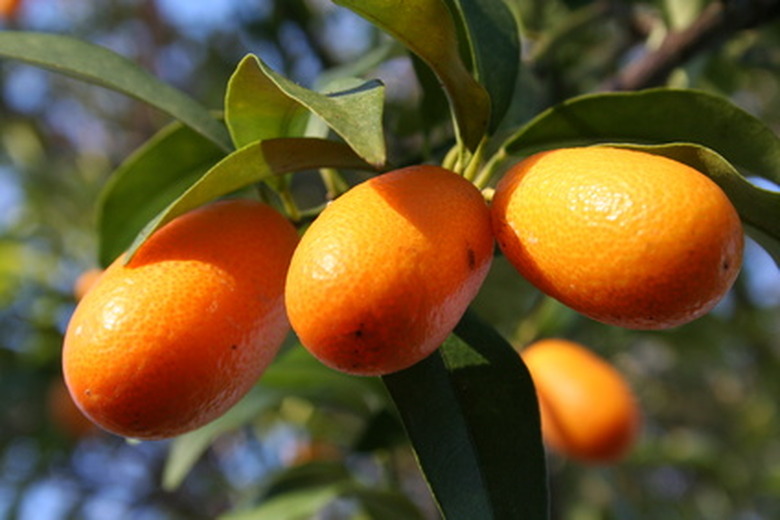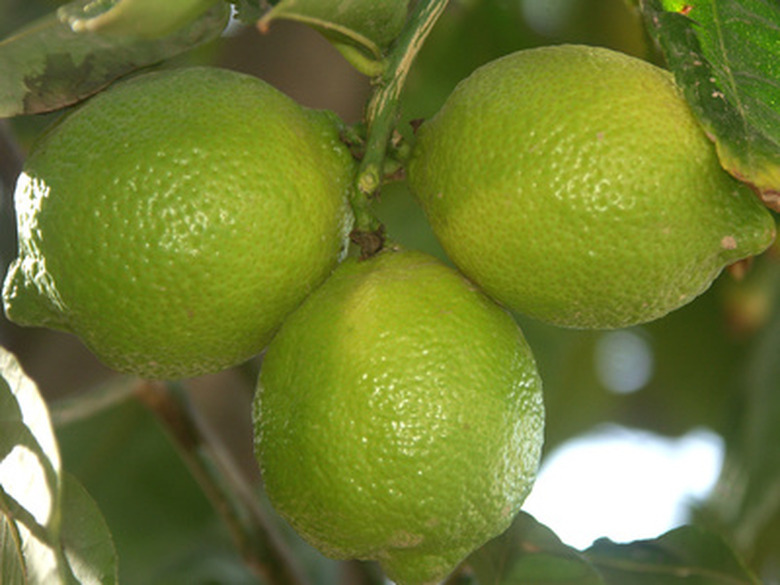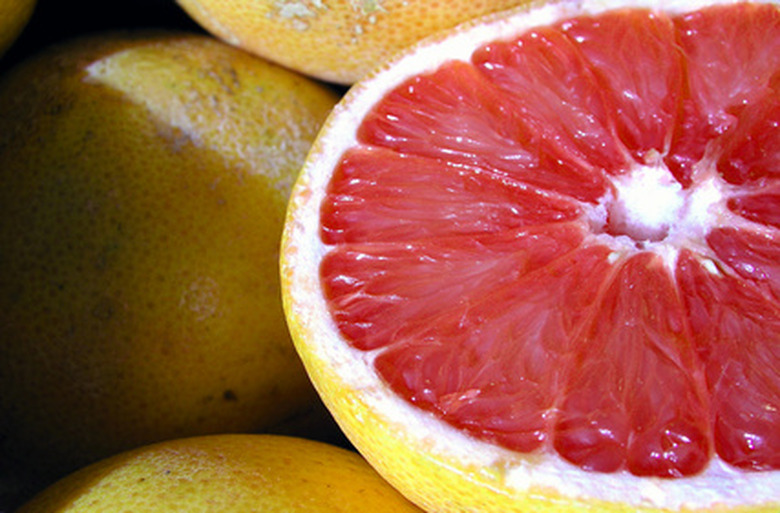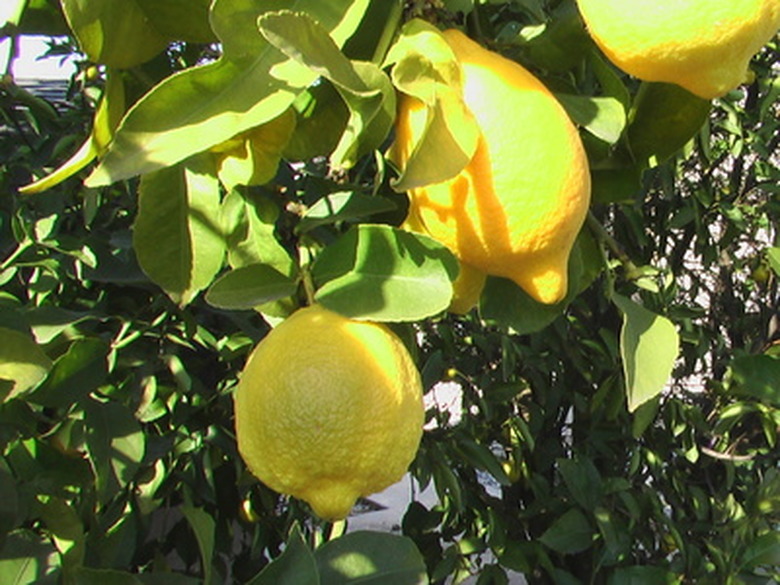Tips On Growing Citrus Trees In Florida
Florida's warm, tropical climate allows gardeners to grow a variety of species of citrus trees. Tangerines, oranges, grapefruits, limes, lemons, tangelos and kumquats will all grow well planted in the ground in warmers USDA hardiness zones 9 and 10. Gardeners in North Florida might need to grow their cold sensitive citrus trees inside containers. Citrus trees not only beatify a landscape, year after year, they bestow delicious fruit.
Selecting the Tree
Research the growth habits and characteristics of a specific citrus tree before making a purchase. For example, oranges come in varieties for juicing or eating, with each having a different characteristic. Juice oranges such as Hamlins, are quite juicy and sweet, but are quite seedy. A variety such as Navel is cultivated for eating and is easier to peel with few seeds. Also, consider the size of the tree at maturity, when selecting a planting site. This will assure the tree has adequate space to grow. Some species of grapefruit can grow over 25 feet tall, with a comparable width.
- Florida's warm, tropical climate allows gardeners to grow a variety of species of citrus trees.
- Some species of grapefruit can grow over 25 feet tall, with a comparable width.
Selecting and Planting Site
Citrus trees are not fussy, as long as you meet their few basic requirements. All varieties of citrus trees thrive in Florida's sandy soil, so there is no need to amend the planting site. Citrus trees do require full sunshine for the majority of the day, as they will eventually die if planted in the shade. They also require an area that drains well and does not retain water. If planted in a consistently moist site, the tree will develop root rot and die. Citrus trees will tolerate a prolonged period of drought over a prolonged period of wetness.
Planting the Citrus Tree
Clear the planting site of weeds, grasses or previous tree roots. Leave an area of three feet in diameter around the tree, vegetation free. If the tree's roots are growing in a circular direction, make several vertical slashes through the root ball. This will help the roots spread out normally in the soil. Saturate the root ball with water, before planting. Plant the tree in a hole that is three times wider that the tree's root ball, but no deeper than it is growing in the container. Do not mulch citrus trees or they can develop root rot and die.
- Citrus trees are not fussy, as long as you meet their few basic requirements.
- If planted in a consistently moist site, the tree will develop root rot and die.
Maintenance
Water the tree after planting and continue watering every other day for the first three weeks. After the citrus tree establishes itself, water it once per week, depending on your local weather. Other than removing crossing limbs, or dead wood, citrus trees do not require pruning. The tree will be more productive if left to grow naturally. Trees will start producing fruit in four to five years. Fertilize in the spring, summer and early fall with a citrus fertilizer, as well as applying manure to the growing site. In the event of a frost or freeze, cover the tree with a blanket to decrease the chance of injury. If damaged by frost, wait until spring to trim any limbs, as they might not really be dead.
- Water the tree after planting and continue watering every other day for the first three weeks.




